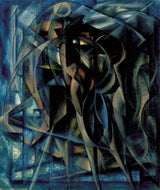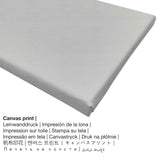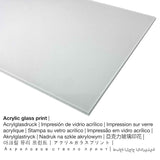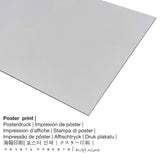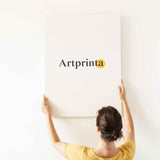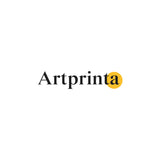Benjamin F. Berlin, 1929 - Figures - fine art print
Tax included. Shipping calculated at checkout.
This painting was painted by the male painter Benjamin F. Berlin. The more than 90 year old original was made with the size 32 1/4 x 27 3/8 in (81,92 x 69,53 cm) and was painted with the techinque oil on canvas. This work of art forms part of the digital art collection of Los Angeles County Museum of Art, which is the largest art museum in the western United States, with a collection of more than 142.000 objects that illuminate 6.000 years of artistic expression across the globe. With courtesy of Los Angeles County Museum of Art (www.lacma.org) (public domain).: . Besides, the alignment of the digital reproduction is in portrait format and has a side ratio of 1 : 1.2, which implies that the length is 20% shorter than the width.
Choose your favorite art print material variant
For every fine art print we offer different sizes and materials. We allow you to pick your favorite size and material among the following product individualization options:
- Aluminium dibond: An Aluminium Dibond print is a print with a true depth effect, which creates a contemporary look by having a non-reflective surface structure. The Direct Print on Aluminum Dibond is your best start to reproductions with aluminum. The bright and white parts of the original artpiece shimmer with a silk gloss, however without any glare. The colors of the print are luminous, the details of the print appear crisp and clear, and the print has a a matte appearance you can literally feel. This direct UV print on aluminium is the most popular entry-level product and is a contemporary way to showcase art, as it draws attention on the replica of the artwork.
- Printed poster on canvas material: A poster print is a UV printed sheet of canvas with a slightly rough finish on the surface. It is particularly suited for placing your art copy using a custom-made frame. Please bear in mind, that depending on the size of the canvas poster print we add a white margin between 2-6cm round about the print, which facilitates the framing.
- Print on acrylic glass: The print on acrylic glass, often denoted as a print on plexiglass, will transform your favorite original work of art into stunning wall décor and offers a viable alternative to aluminium and canvas art prints. The artwork will be manufactured with the help of modern UV direct print machines. The image effect of this are vivid and sharp colors. With an acrylic glass art print contrasts and also small color details become recognizeable thanks to the subtle gradation.
- The canvas print: A UV printed canvas mounted on a wood stretcher frame. A canvas generates the typical effect of three dimensionality. Canvas Prints have the advantage of being low in weight, meaning that it is quite simple to hang your Canvas print without the use of any wall-mounts. Canvas prints are suited for all types of walls.
Disclaimer: We do what we can in order to depict the art products as closely as it is possible and to demonstrate them visually on the respective product detail pages. Nevertheless, the tone of the printing material and the print result might vary marginally from the presentation on the screen. Depending on the screen settings and the nature of the surface, not all color pigments can be printed one hundret percent realistically. In view of the fact that all our art prints are processed and printed manually, there might also be minor differences in the motif's size and exact position.
About this article
| Product classification: | art reproduction |
| Reproduction method: | digital reproduction |
| Production method: | UV direct print |
| Production: | German production |
| Type of stock: | on demand production |
| Intended product usage: | wall gallery, wall art |
| Alignment: | portrait format |
| Side ratio: | length to width 1 : 1.2 |
| Implication: | the length is 20% shorter than the width |
| Fabric choices: | metal print (aluminium dibond), acrylic glass print (with real glass coating), poster print (canvas paper), canvas print |
| Canvas on stretcher frame (canvas print) size variants: | 50x60cm - 20x24", 100x120cm - 39x47" |
| Acrylic glass print (with real glass coating) size options: | 50x60cm - 20x24", 100x120cm - 39x47" |
| Poster print (canvas paper) sizes: | 50x60cm - 20x24", 100x120cm - 39x47" |
| Aluminium dibond print (aluminium material): | 50x60cm - 20x24", 100x120cm - 39x47" |
| Art print framing: | unframed art print |
Structured artwork data
| Name of the piece of art: | "Figures" |
| Categorization: | painting |
| Umbrella term: | modern art |
| Period: | 20th century |
| Created in: | 1929 |
| Approximate age of artwork: | over 90 years old |
| Painted on: | oil on canvas |
| Original size: | 32 1/4 x 27 3/8 in (81,92 x 69,53 cm) |
| Exhibited in: | Los Angeles County Museum of Art |
| Museum location: | Los Angeles, California, United States of America |
| Website of the museum: | www.lacma.org |
| License type: | public domain |
| Courtesy of: | Los Angeles County Museum of Art (www.lacma.org) |
Artist summary table
| Artist: | Benjamin F. Berlin |
| Gender: | male |
| Jobs: | painter |
| Classification: | modern artist |
© Copyright protection, Artprinta.com (Artprinta)
(© - by Los Angeles County Museum of Art - Los Angeles County Museum of Art)
Berlin’s turn to modernism was supposedly initiated by his reading of Jerome Eddy’s notable book Cubists and Post-Impressionism (1914), and his earliest abstractions are indebted to cubism. Although Berlin probably never visited France, by the 1920s cubism was well known in Los Angeles and he would have been aware of it. In this painting the figures are fused with the surrounding environment in a configuration of overlapping and intersecting faceted planes and ray lines, standard cubist devices. During the 1920s, when this canvas may have been painted, STANTON MACDONALDWRIGHT was the dominant force in Los Angeles’s modernist circles. His art, although exhibiting more arabesque lines, may have influenced Berlin’s treatment of the figure, especially in his use of delicate, translucent planes. The cubist art of Lorser Feitelson, who became a major progressive force in Los Angeles after his move to the West Coast in 1927, also may have served as a model for Berlin. A painting that may have directly inspired Figures is Nude Descending a Staircase (No. 2), 1912 (Philadelphia Museum of Art), by Marcel Duchamp (1887-1968). Duchamp’s often reproduced painting was a notorious modernist work, and it is likely that Berlin became acquainted with it through the collector Walter Arensberg, who had settled in Hollywood in the 1920s and always opened his home to artists. Arensberg did not acquire the painting until 1930, but before that time he proudly displayed a color reproduction of it. As in Duchamp’s painting, Berlin’s cubist analysis of movement results in an allover composition of intersecting planes and diagonal lines colored in a somber dominant hue. The dark lines are in blue with brighter, warm colors brushed in to create a translucent effect. Figures may have been one of the paintings, as was Rhythmic Forms (unlocated), in Berlin’s 1924 exhibition at the Potboiler, for in an article commenting on the show, Berlin was praised for being one of the first to attempt the depiction of the fourth dimension.

